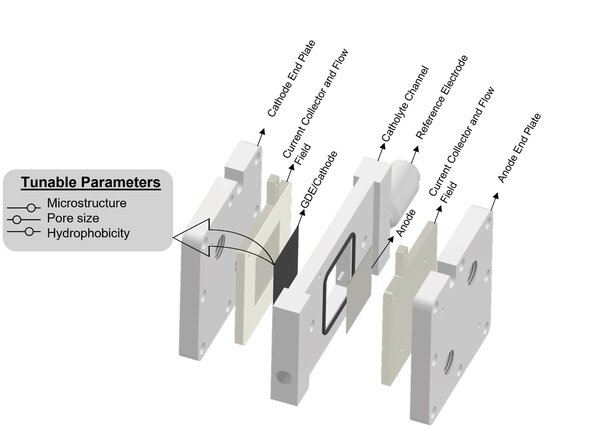The electrochemical reduction of CO2 is a promising technology for the production of clean and sustainable chemicals and fuels through the utilization of captured CO2. The gas diffusion electrode (GDEs) is a key component which enables higher current density operation due to their porous structure which facilitates efficient gas diffusion to the catalytic surface. However, the current state-of-the art GDE materials have been repurposed from polymer electrolyte fuel cells and, while functional, these GDEs have not been tailored for the specific requirements of emerging CO2 electrolysis cells. The GDE microstructure and surface properties are unsuited to sustain the growing requirements of CO2 electrolysis flow reactors. The current commercially available GDEs suffer from low durability due to flooding with operational times of less than 100 hours. Therefore, there is a need for tailored GDEs with controlled microstructure and hydrophobicity.
The aim of this project is to manufacture advanced GDEs using scalable techniques. First, the role of the GDE microstructure in improving the CO2 electrolysis performance will be investigated. Furthermore, simulations will be utilized to guide the synthesis process and determine the optimal GDE microstructure and hydrophobicity. By controlling synthetic parameters, we aim to engineer pore size distribution, porosity, and wetting properties to reach target performance metrics. The synthetic parameters will be correlated with resulting properties (e.g. microstructure, transport) and flow cell performance.


Contact details:
Senan Amireh
SMP- EMS
Helix - STO 1.27
s.f.z.amireh@tue.nl